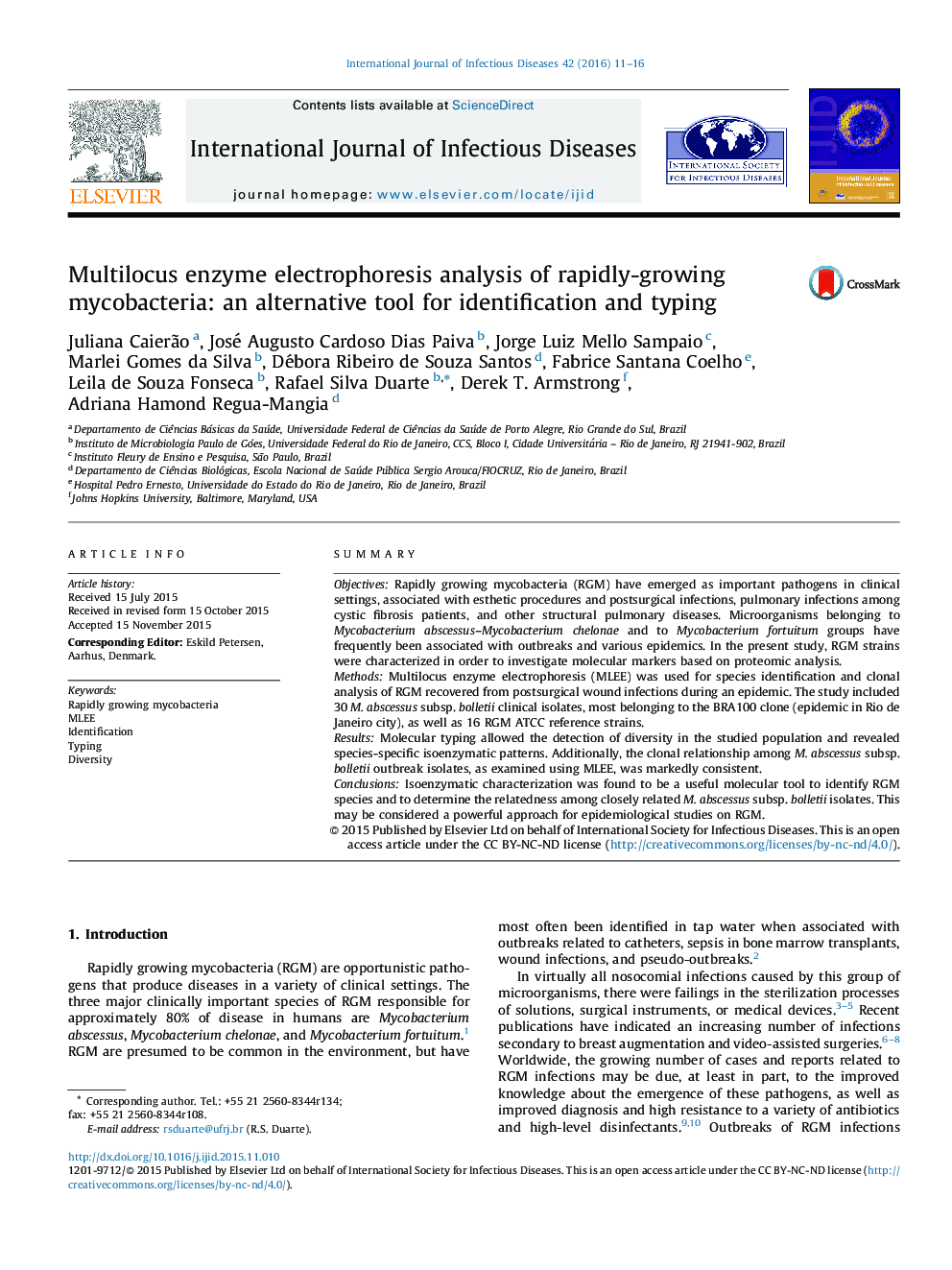| Article ID | Journal | Published Year | Pages | File Type |
|---|---|---|---|---|
| 3361687 | International Journal of Infectious Diseases | 2016 | 6 Pages |
•Rapidly growing mycobacteria (RGM) are opportunistic pathogens associated with outbreaks.•Conventional identification of RGM species is laborious and uncertain.•Molecular techniques provide relevant information on diagnosis and clonality.•Multilocus enzyme electrophoresis (MLEE) was found to be a powerful tool for the identification and typing of epidemic RGM species.
SummaryObjectivesRapidly growing mycobacteria (RGM) have emerged as important pathogens in clinical settings, associated with esthetic procedures and postsurgical infections, pulmonary infections among cystic fibrosis patients, and other structural pulmonary diseases. Microorganisms belonging to Mycobacterium abscessus–Mycobacterium chelonae and to Mycobacterium fortuitum groups have frequently been associated with outbreaks and various epidemics. In the present study, RGM strains were characterized in order to investigate molecular markers based on proteomic analysis.MethodsMultilocus enzyme electrophoresis (MLEE) was used for species identification and clonal analysis of RGM recovered from postsurgical wound infections during an epidemic. The study included 30 M. abscessus subsp. bolletii clinical isolates, most belonging to the BRA100 clone (epidemic in Rio de Janeiro city), as well as 16 RGM ATCC reference strains.ResultsMolecular typing allowed the detection of diversity in the studied population and revealed species-specific isoenzymatic patterns. Additionally, the clonal relationship among M. abscessus subsp. bolletii outbreak isolates, as examined using MLEE, was markedly consistent.ConclusionsIsoenzymatic characterization was found to be a useful molecular tool to identify RGM species and to determine the relatedness among closely related M. abscessus subsp. bolletii isolates. This may be considered a powerful approach for epidemiological studies on RGM.
